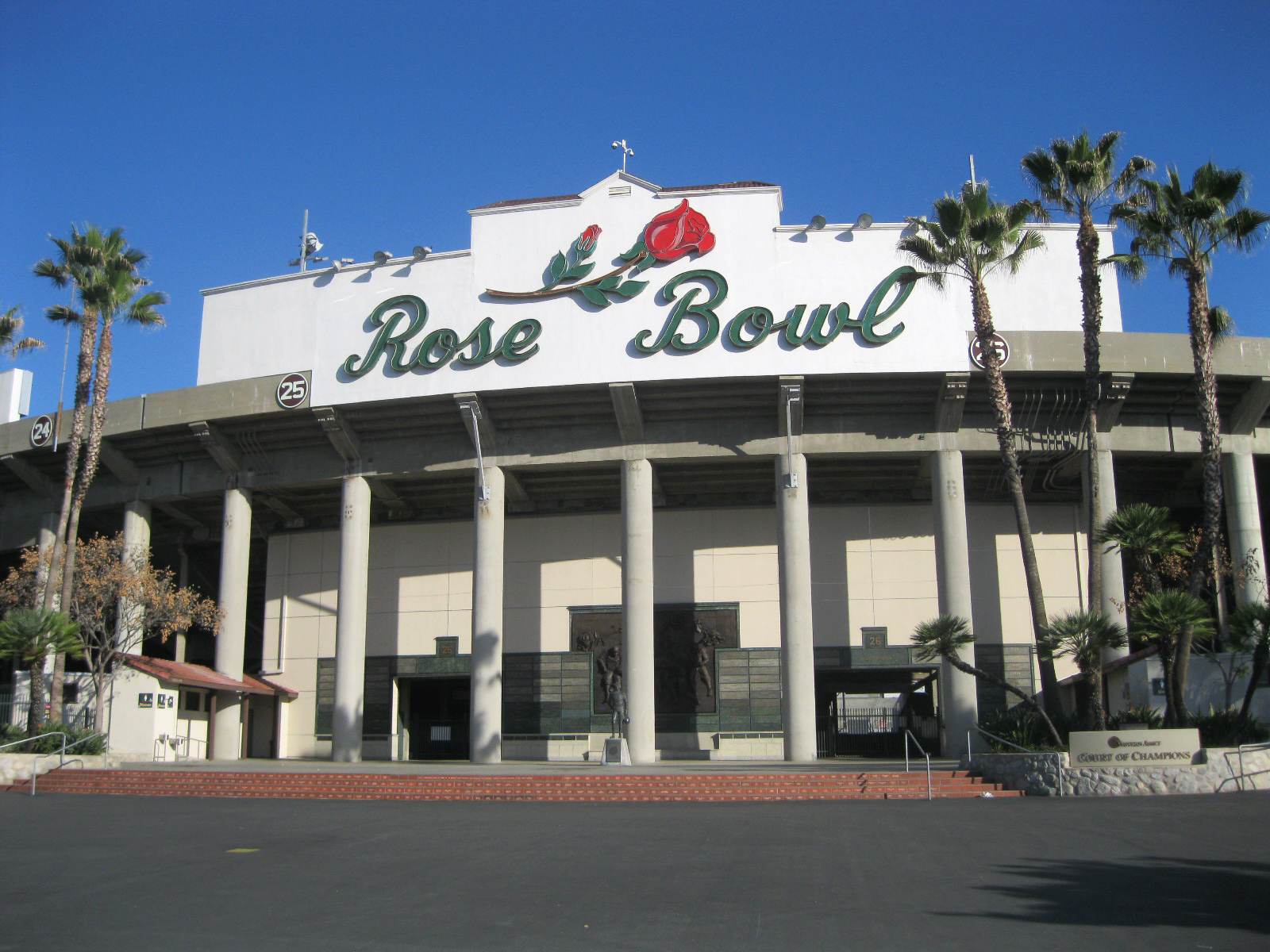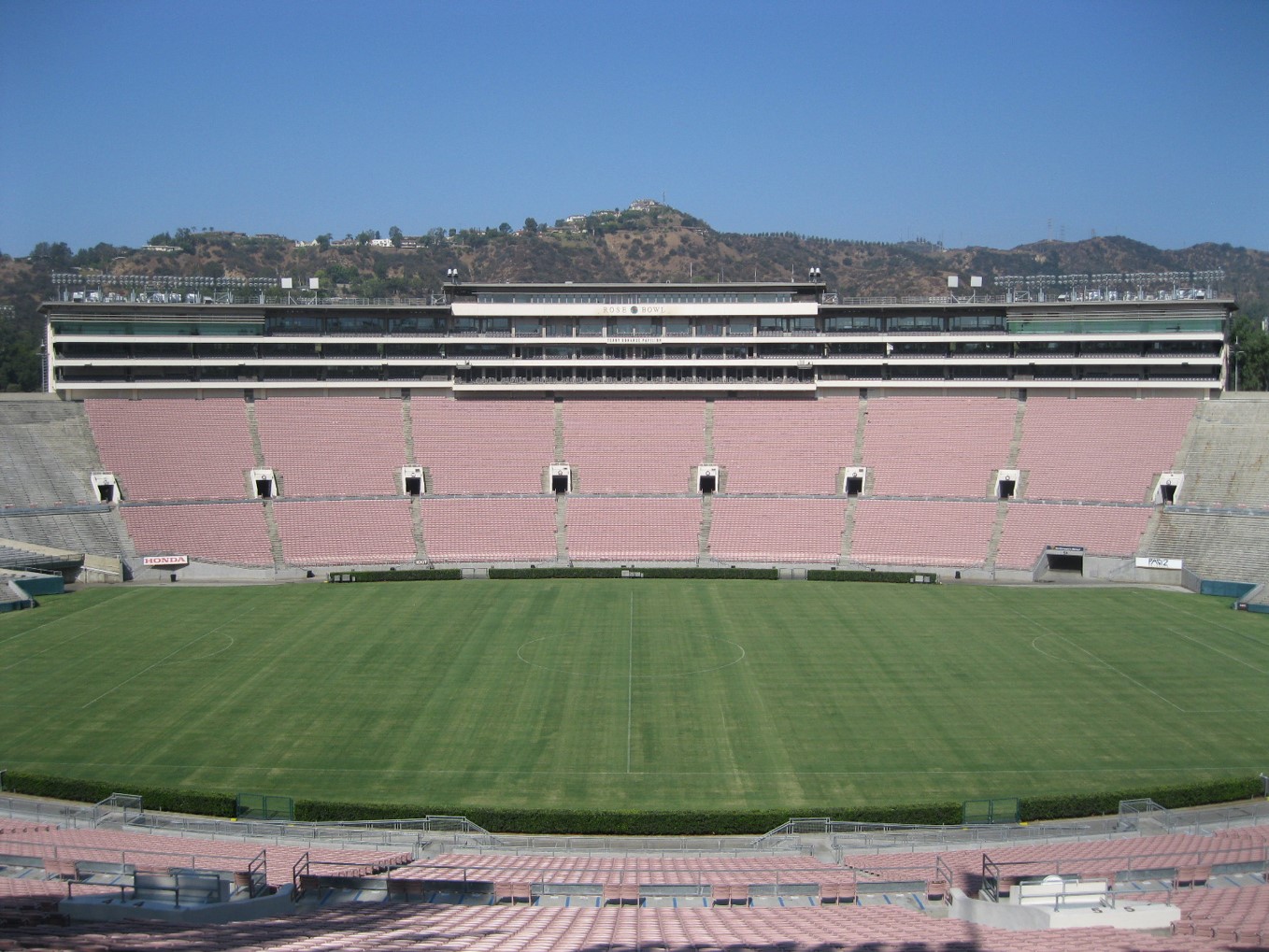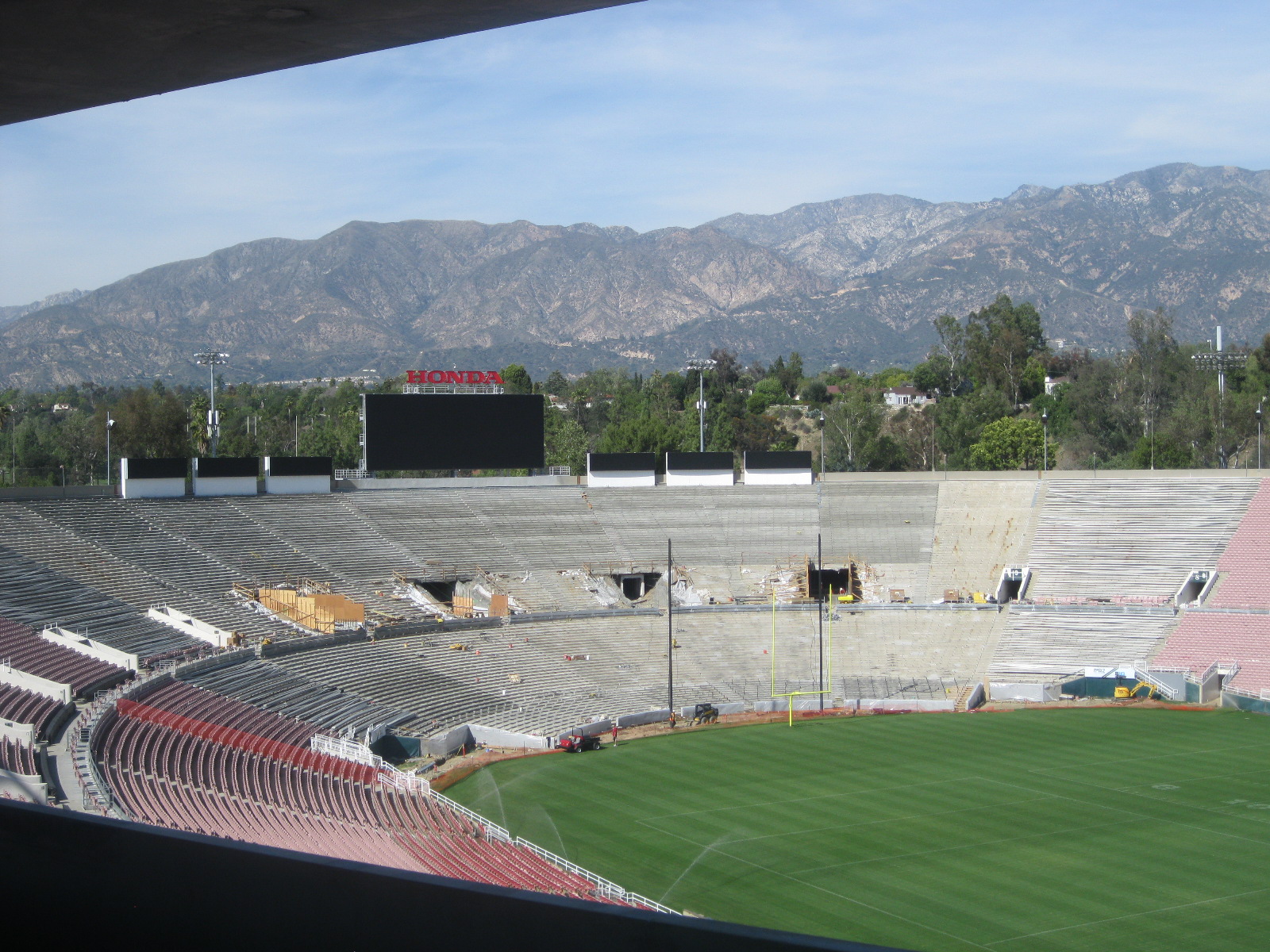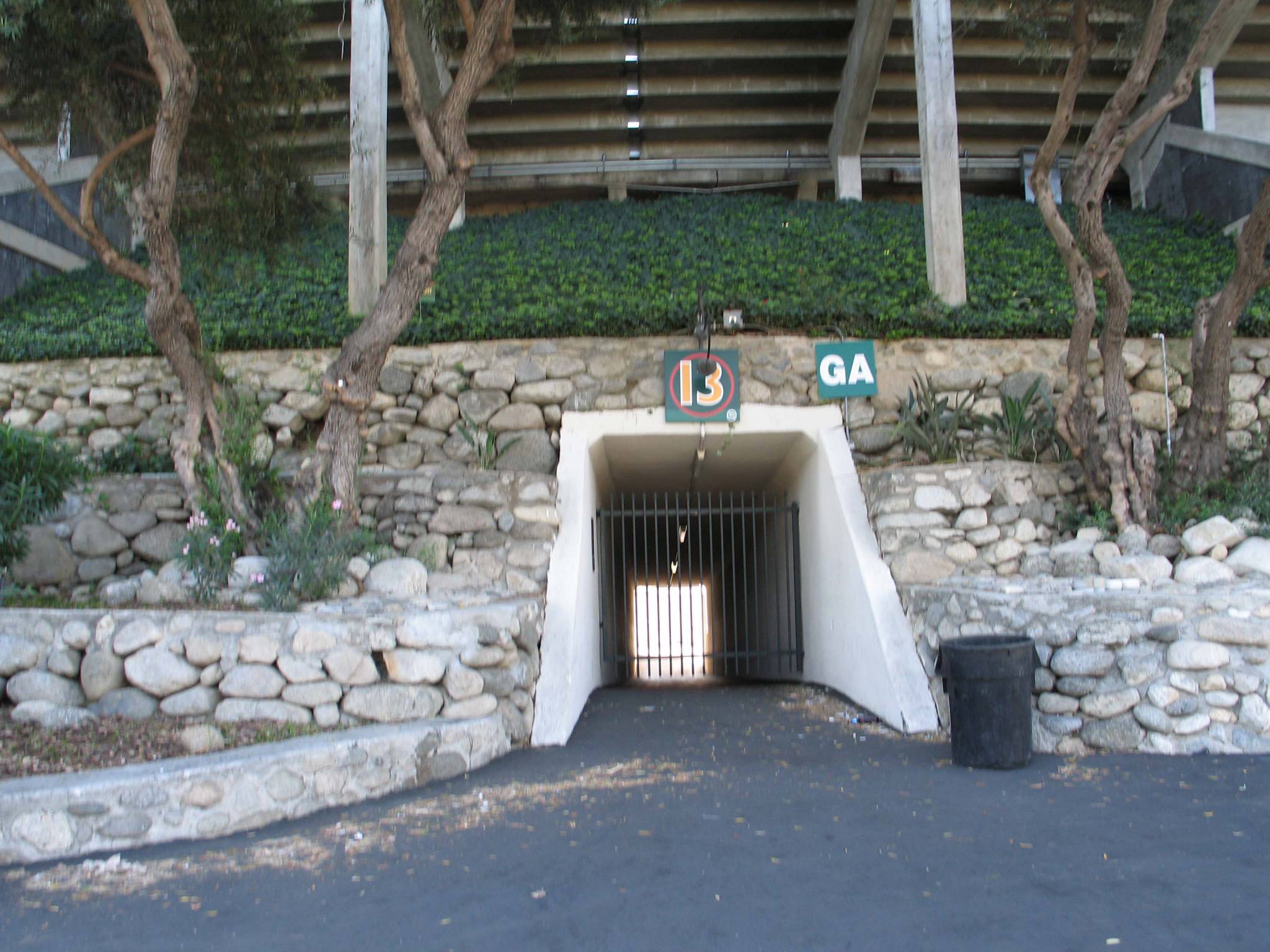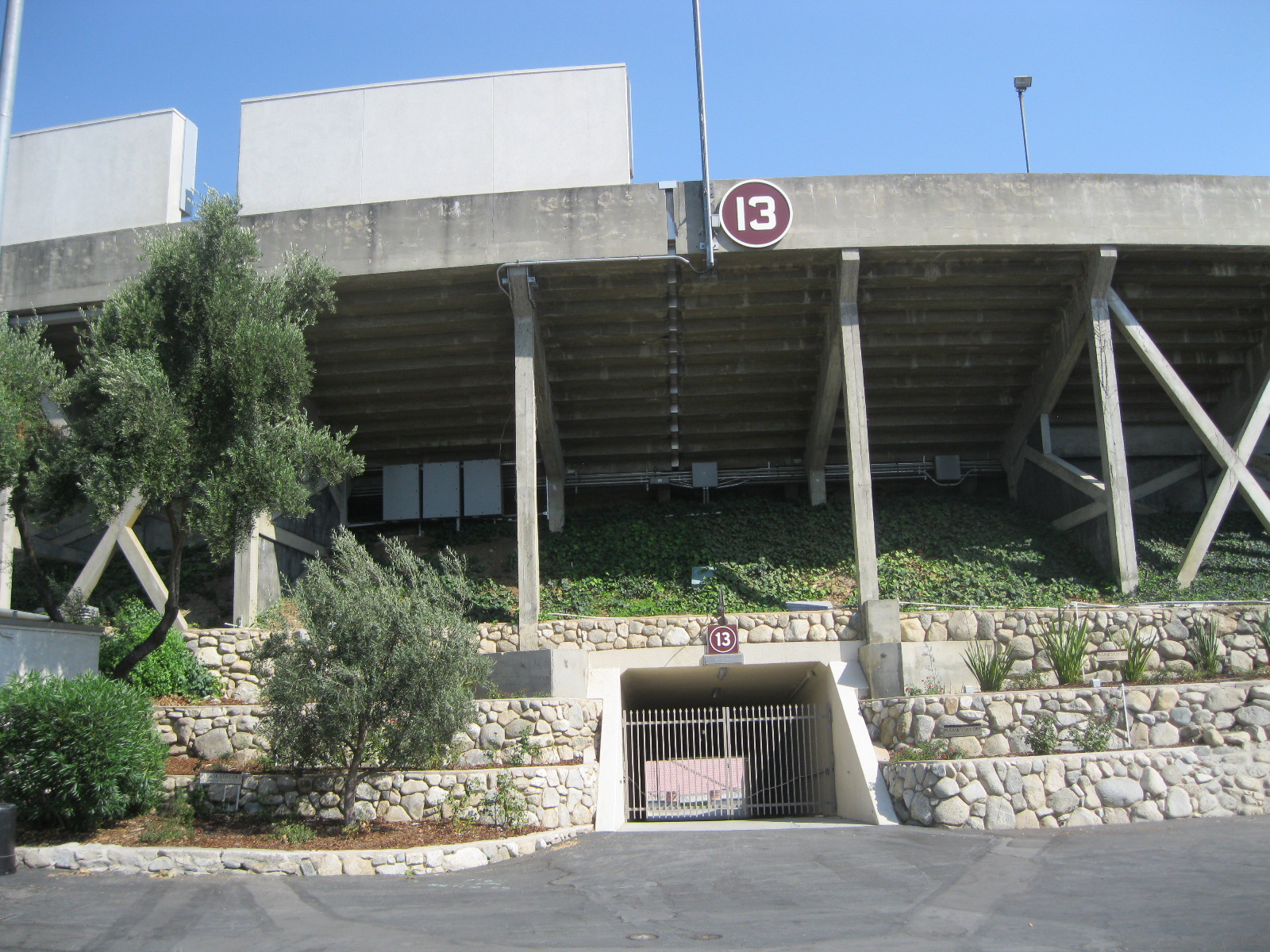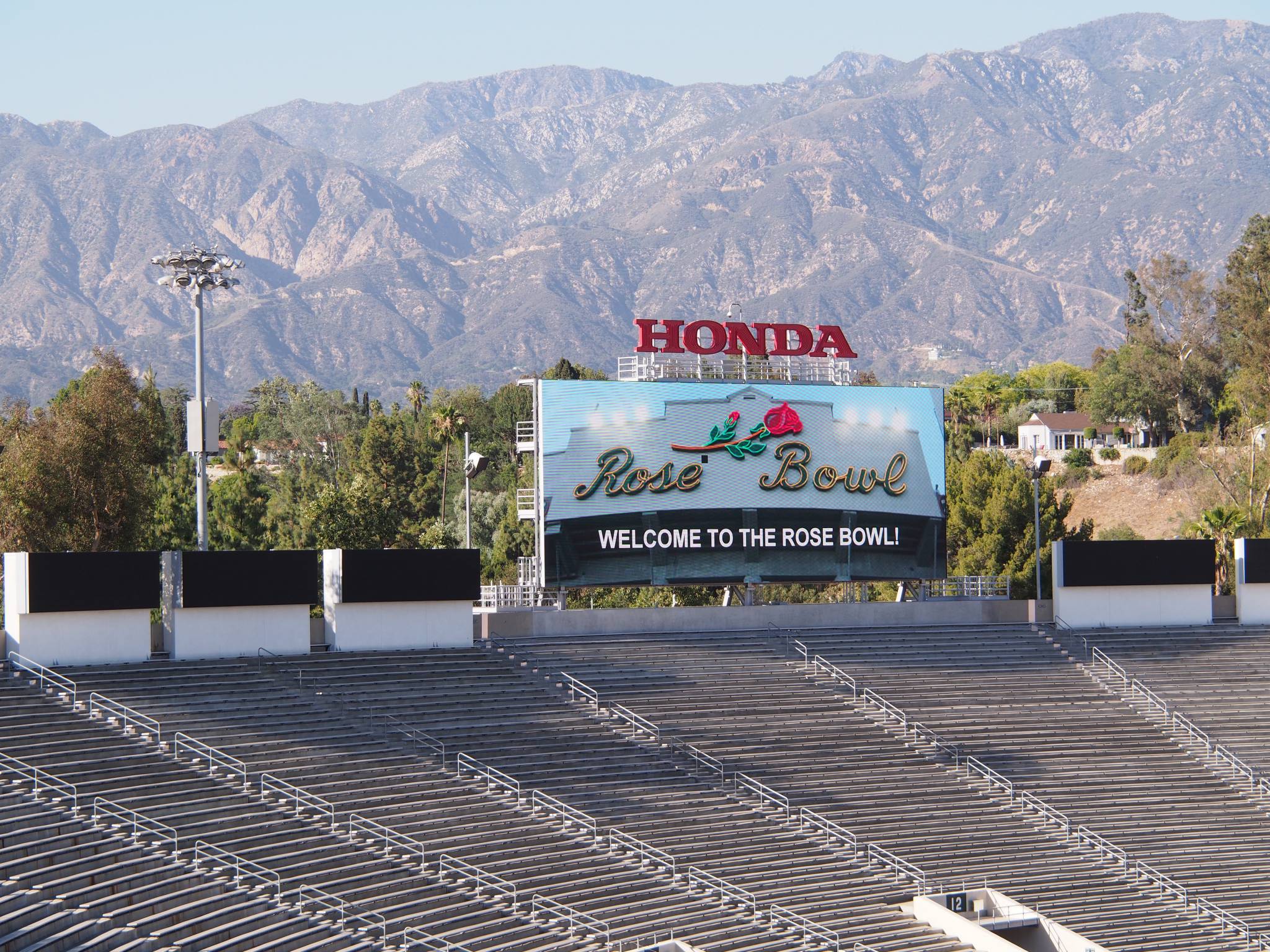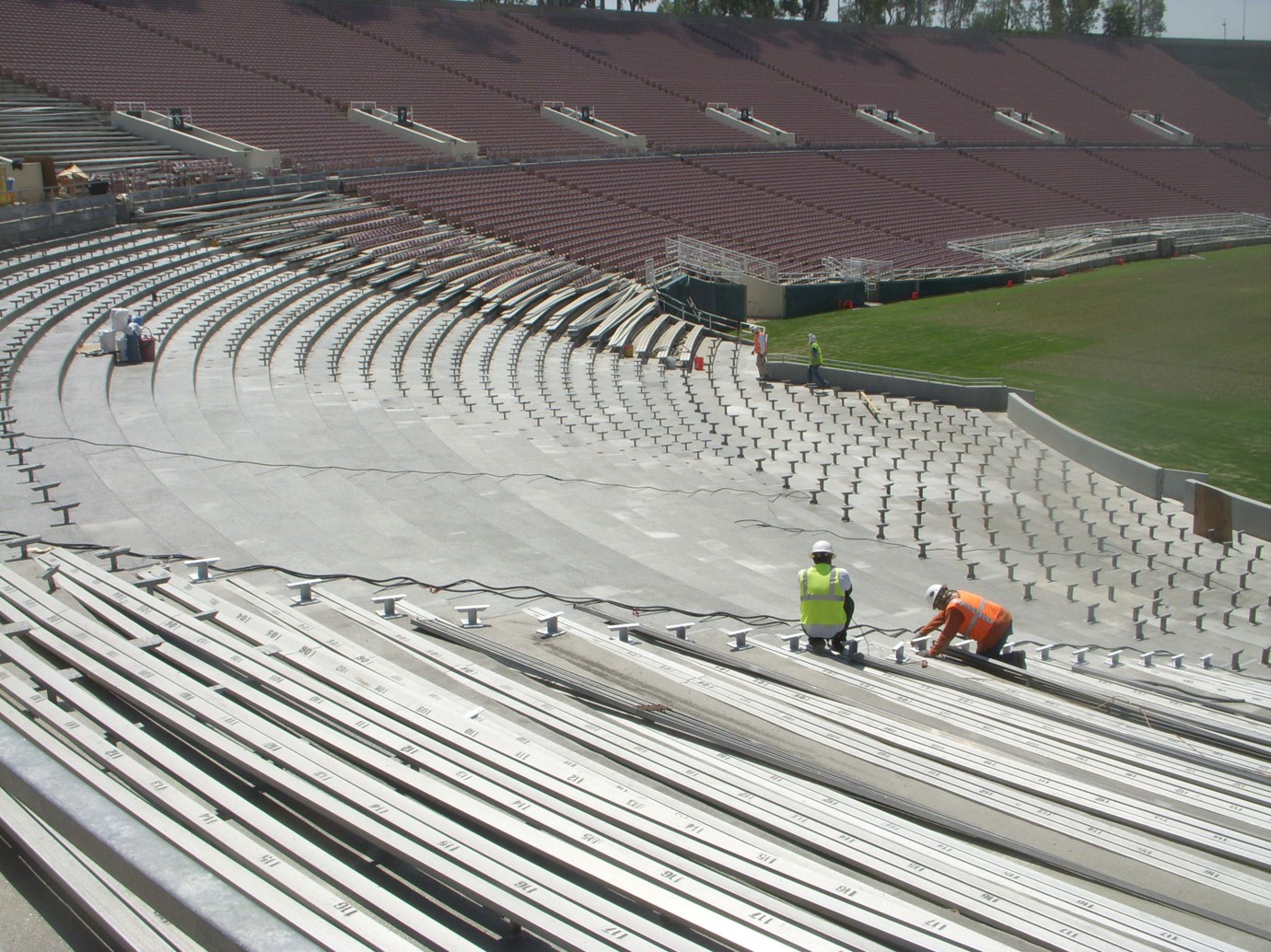Rose Bowl
The Rose Bowl is the winner of a 2018 Preservation Design Award. Award recipients are selected by a jury of top professionals in the fields of architecture, engineering, planning, and history, as well as renowned architecture critics and journalists. In making their decision, the jury stated: “This work was very well done, and serves as a model for stadium rehabilitation.”
The Award will be presented on Friday, October 19, 2018 at a gala dinner and awards ceremony at Millennium Biltmore Hotel in Los Angeles. Tickets and sponsorship options are available at californiapreservation.org/awards.
About this project
The Rose Bowl is nicknamed “America’s Stadium.” It epitomizes what a significant sports arena can mean to a local community. Though revered, the Rose Bowl’s infrastructure and amenities paled in comparison to more modern facilities. Fewer events were being booked, and operating expenses exceeded income. A proposal to alter the Rose Bowl into an NFL venue threatened its National Historic Landmark status and galvanized community opposition. An opposition ballot measure in the City of Pasadena defeated the NFL deal. Preservation prevailed, but the City still needed a “Plan B” to sustain the property. This is the “Plan B” project.
The Rose Bowl is the emblem of the early years of American football and the growing popularity of the sport in twentieth-century American life. Designed by Myron Hunt, the Rose Bowl was built in 1922 to accommodate what was then a new phenomenon: the college “bowl” game that was initiated as part of the Tournament of Roses. The Rose Bowl is a civic monument, manifesting a small city’s ambitions. Even today the bowl and field can fit all of the residents of Pasadena. It served as a venue for both the 1932 and 1984 Olympics, in addition to World Cup soccer, five Super Bowl games, and big-name concerts. However, the physical and visual character of the Rose Bowl had diminished due to incompatible additions and deferred maintenance.
Historic sports venues are among the most threatened building types due to the difficulty of adaptive reuse and demands of the sports business. The Rose Bowl Renovation project was the result of significant civic and community investment that achieved improved function, rehabilitated and modernized the National Historic Landmark Rose Bowl stadium, and restored its economic viability. The project was the culmination of a decade long search for a compatible design and economic solution.
Improvements include a new pavilion to replace an outdated and non-historic pavilion for press and premium seating; creative life safety improvements achieved with minimal alterations by selectively widening tunnels and vomitoria; improved concessions and restroom facilities; and new video and sign boards that are visually coherent, and more compatible. The solution is a template for the preservation of the few remaining historic stadiums.
Photos © D’AIQ Architects Robert Mercado
Project Team
Client
Margo Mavridis
Rose Bowl Operating Company
Architect
David Sliwinski
D’AIQ Architects
Historic Architect
Peyton Hall, FAIA
Historic Resources Group
Landscape Architect
Jorge Gutierrez
EPT Design, Inc.
Construction Manager
Carl Magness
Bernards Barton Malow Joint Venture
Structural Engineer
Stephan Eisenreich
Thornton Tomasetti, Inc.
Mechanical Engineer
Nick Gallucci, PE
Syska Hennessy Group, Inc.
Civil Engineer
Patrick Wong
W2 Design, Inc.
Graphic Consultant
Ronnie Younts
Younts Design, Inc.
















